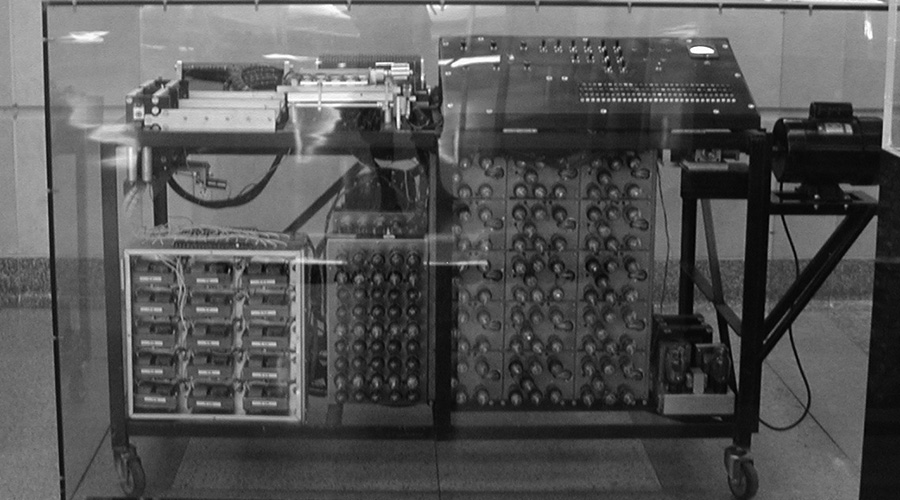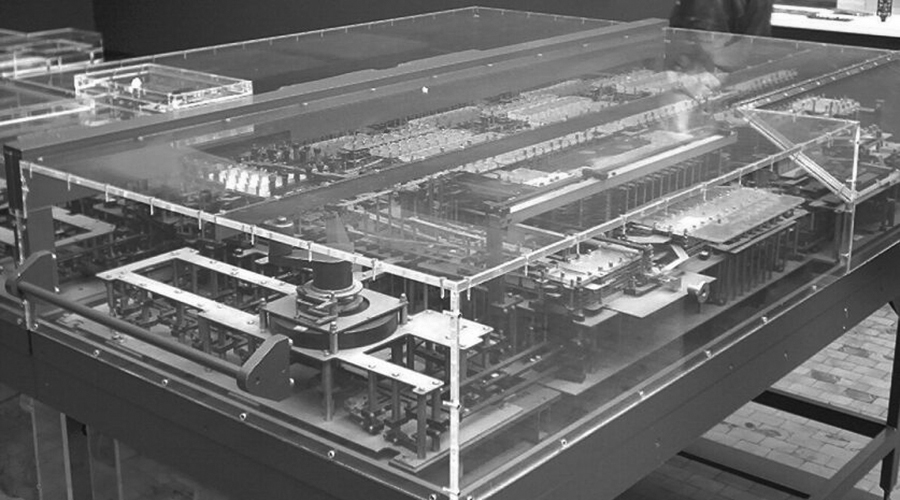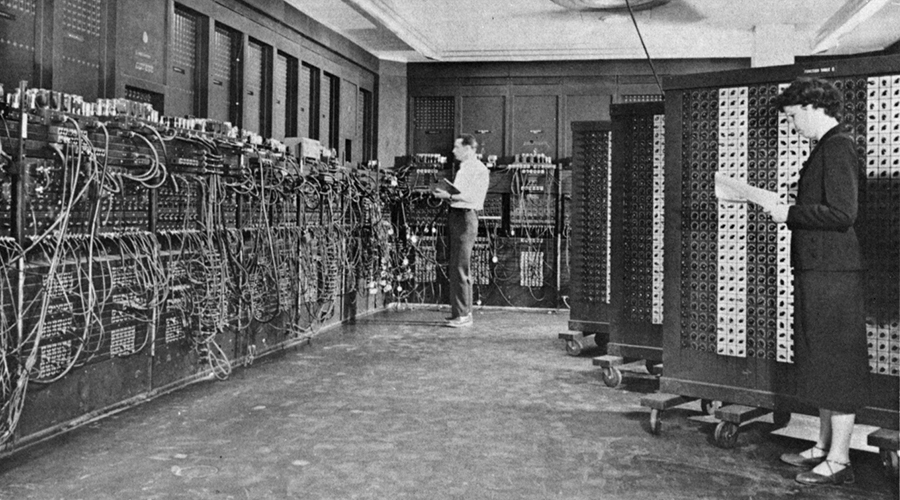First Computers
The Creation of the Digital Computer
The principle of the modern computer was first described by computer scientist Alan Turing, who set out the idea in his seminal 1936 paper, On Computable Numbers. Turing reformulated Kurt Gödel's 1931 results on the limits of proof and computation, replacing Gödel's universal arithmetic-based formal language with the formal and simple hypothetical devices that became known as Turing machines. He proved that some such machine would be capable of performing any conceivable mathematical computation if it were representable as an algorithm. He went on to prove that there was no solution to the Entscheidungsproblem by first showing that the halting problem for Turing machines is undecidable: in general, it is not possible to decide algorithmically whether a given Turing machine will ever halt.
He also introduced the notion of a 'Universal Machine' (now known as a Universal Turing machine), with the idea that such a machine could perform the tasks of any other machine, or in other words, it is provably capable of computing anything that is computable by executing a program stored on tape, allowing the machine to be programmable. Von Neumann acknowledged that the central concept of the modern computer was due to this paper. Turing machines are to this day a central object of study in theory of computation. Except for the limitations imposed by their finite memory stores, modern computers are said to be Turing-complete, which is to say, they have algorithm execution capability equivalent to a universal Turing machine.
Purely electronic circuit elements soon replaced their mechanical and electromechanical equivalents, at the same time that digital calculation replaced analog. Machines such as the Z3, the Atanasoff–Berry Computer, the Colossus computers, and the ENIAC were built by hand, using circuits containing relays or valves (vacuum tubes), and often used punched cards or punched paper tape for input and as the main (non-volatile) storage medium.



